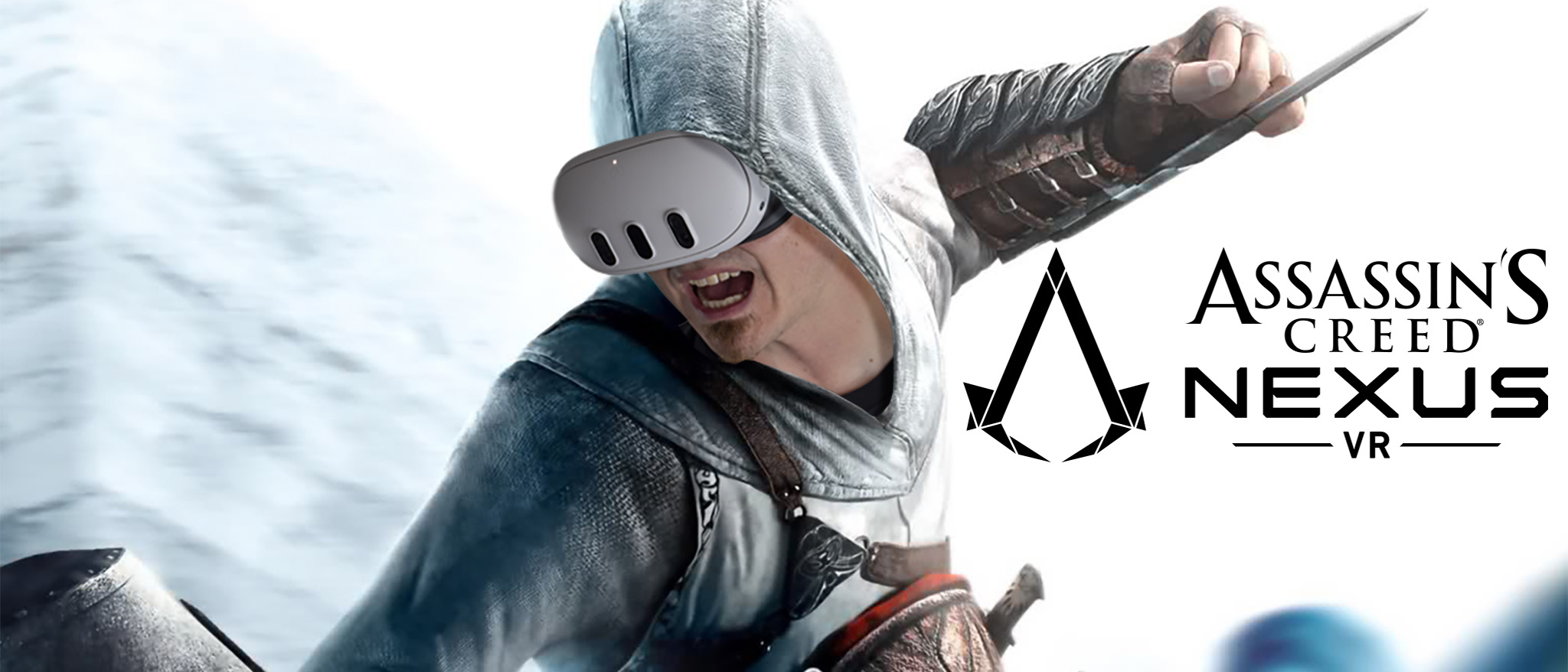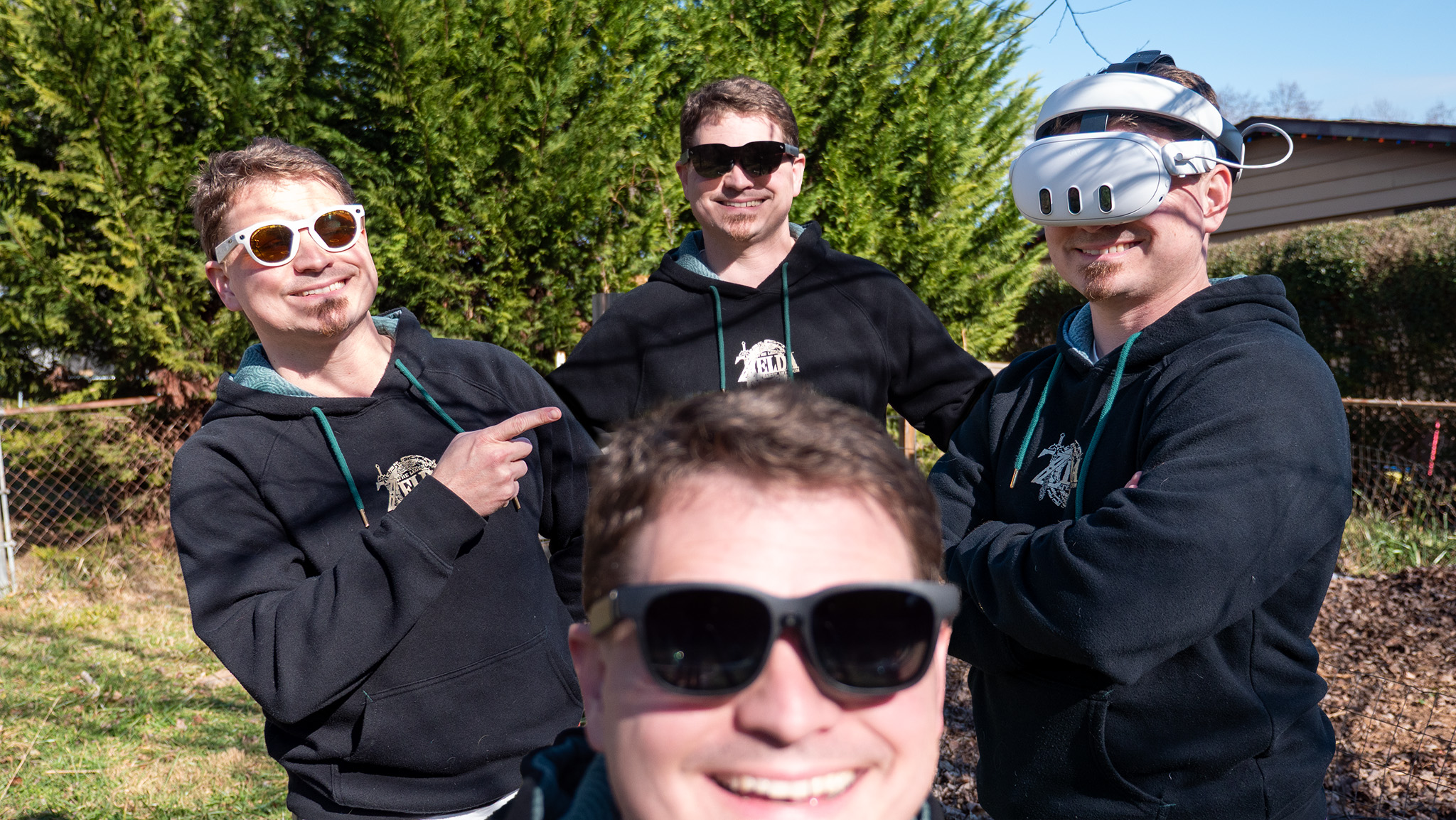Android Central Verdict
Assassin's Creed Nexus VR isn't just a triumphant first entry into the VR space, it's a brilliant return to the series' roots in a substantial way. The amount of variety in the game is staggering, and you'll be regularly surprised by not only what you can do, but how much content Ubisoft was able to include in such a well-produced and made title.
Pros
- +
30+ hour-long campaign
- +
Stunning visuals and voice work
- +
Stealthy, exciting gameplay
- +
Unparalleled parkour experience
- +
An astounding variety of levels
- +
Brilliant accessibility options
Cons
- -
Even hard mode is a bit easy
- -
Some climbing glitches
Why you can trust Android Central
For days, all I could think about was Assassin's Creed Nexus. The feeling of jumping from rooftop to rooftop was more than cathartic; it was almost ethereal. I found myself waking up early just to get one more fix before work started.
When I say Assassin's Creed Nexus is a triumph, I don't mean the game is perfect. It's got its fair share of bugs and design issues - most games do, after all - but I can look past most of those because of what has been delivered here.
This is easily the best Assassin's Creed game in more than a decade, and it's because it holds true to what makes these games so good: deep stories, excellent parkour, and great stealth mechanics. The game spans three different playable characters across 2,500 years of human history, encompassing 15 massive missions in a dozen very different locations that'll take you 30 hours or more to complete.
It's essentially the perfect game for the perfect time. The Meta Quest 3 just came out and this is as good a system seller as I've seen since Breath of the Wild's debut on the Nintendo Switch six years ago.
Masterful movement

To me, movement and parkour are what make an Assassin's Creed game stand out among the pack of open-world titles. It's why I haven't cared much about the most recent entries of the series, which often see players roaming around vast landscapes instead of mostly climbing buildings and assassinating people in back alleys.
And that's exactly what makes Assassin's Creed Nexus feel like a proper mainline Assassin's Creed game.
No VR game pulls off parkour as elegantly as Assassin's Creed Nexus. It makes the everyday person actually feel like a master assassin.
Of all the VR games that include parkour and climbing, none do it as masterfully or elegantly as Assassin's Creed Nexus. The game employs a brilliant balance assist system that helps everyone feel like a master assassin, and it's quite surprising that we haven't seen anything quite like this before.
Get the latest news from Android Central, your trusted companion in the world of Android
That also poses a problem when it doesn't work as you'll come to expect but, I digress. Let's go over the basics first.
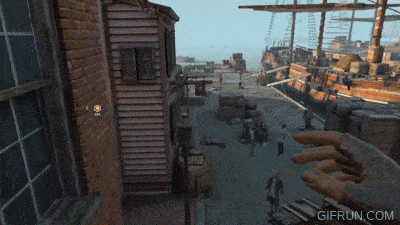
If you're familiar with watching the many protagonists of the series climb, you'll already know how it works. There are no arbitrary restrictions to climbing up surfaces, but a surface must be somewhat physically climbable in the real world. Rounded surfaces, like pillars or building facades, don't provide a person enough of a surface to grapple onto and, therefore, cannot be climbed.
Anything that's generally straight-edged — including vertical surfaces like the edges of a building or a support pillar — is free to grab and climb up. It's a simple system that works identically to the mainline series. The difference, of course, is that you'll be the one climbing instead of just pushing a joystick forward.
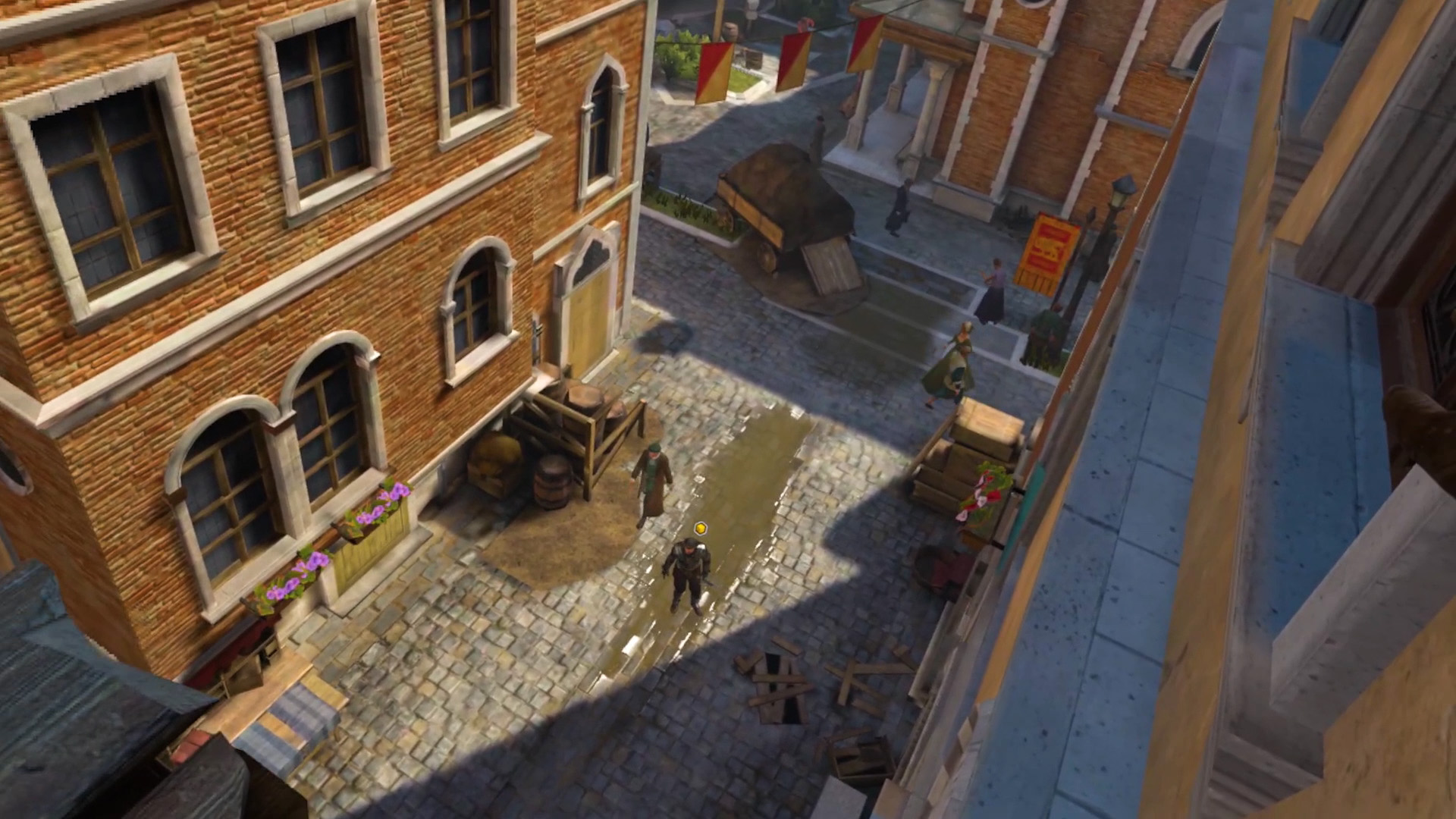
Anything you can grab in the game is first represented by a white circle that ensures players immediately understand what's grabbable and what's not, whether that's a climbable surface or a vase on a table.
Players can only climb what makes sense, but this can also lead to frustration when the system doesn't work as expected.
And while it does employ some use of Half-Life: Alyx's distance-grabbing mechanics — aim your hand at any object with a white circle, grip the controller, and pull it toward you — it's not quite as reliable as that game. Throwing knives, for instance, have to be physically plucked out of a guard's body instead of magnetically pulled toward you.

Likewise, grabbing onto a ledge has to be done with precision. If you're off just a bit, the character probably won't grab the ledge, and you'll fall. While the game is extremely forgiving with parkour — as you'll find out below — it can be very strict with climbing.
It's here where I found my biggest frustration with the game as my son and I had countless "what the..." moments when climbing; that typically meant that we went to perform some kind of climbing action only to end up falling because we didn't grab the ledge exactly right.
Adjusting the hand stabilization accessibility setting makes it so that your virtual hand snaps to illuminated objects when you press the grip button, which can help reduce these moments of frustration.

But parkour is handled with such grace and efficiency I struggle to understand why no one seems to have thought of this system earlier. It's one of those moments of sheer brilliance that I hope to see copied in VR games in the years to come.
Developing a system that lets everyday people perform these miraculous motions is imperative to ensuring that the feeling of Assassin's Creed is properly translated to the first-person VR perspective.
Jumping is handled by pressing or holding the A button, but characters don't jump all the time; just when it makes sense to. If you're running toward a wall, for instance, pressing the jump button will make the character perform a leap. If you're just running down the street, pressing the jump button does nothing.
It's an interesting middle ground between something like older 3D Zelda games — where Link would automatically jump any time you attempted to walk or run off a ledge — and full open-ended mechanics in a game like Blade & Sorcery.
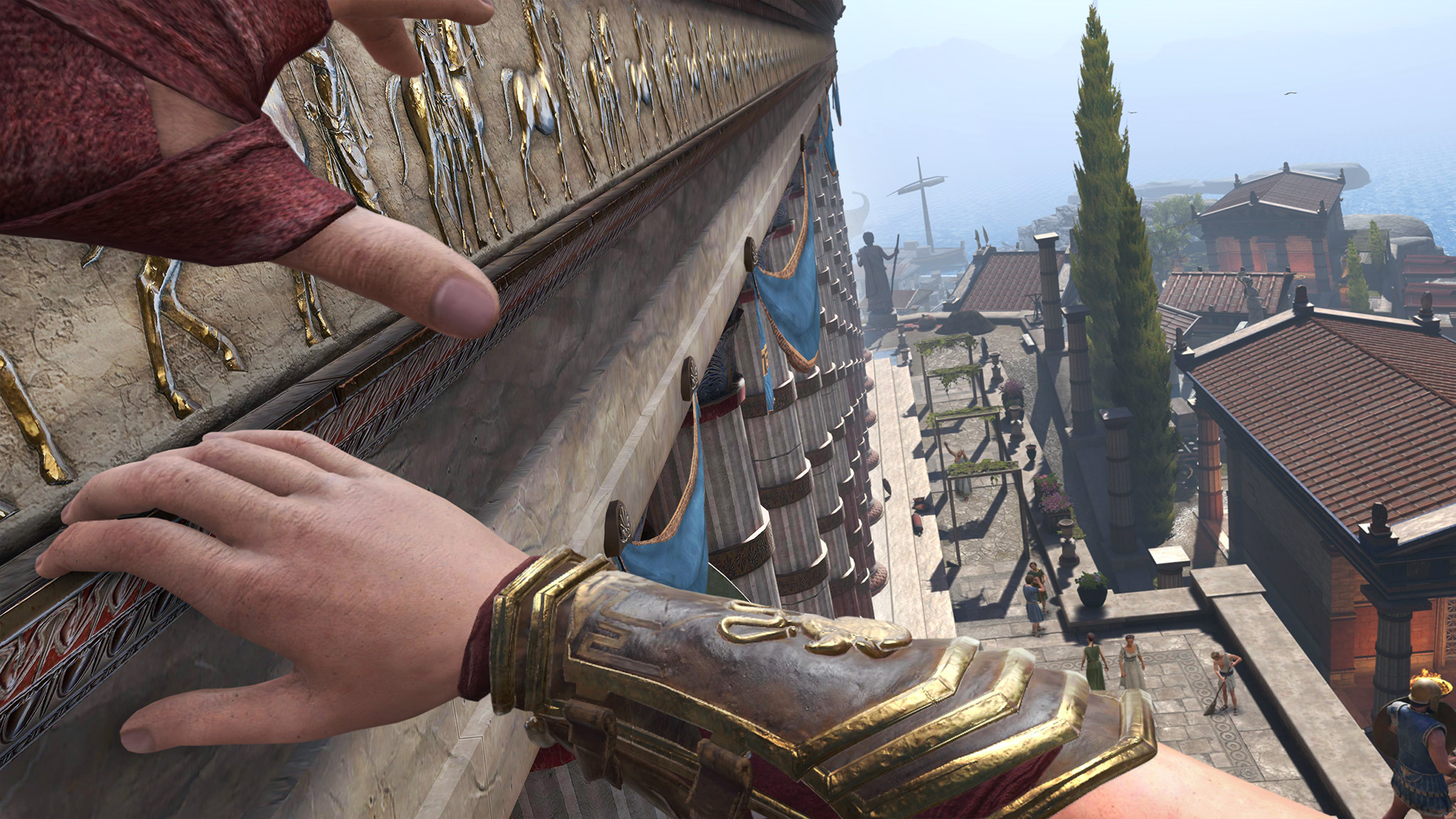
Part of the genius here isn't just jumping up to a wall, though. It's jumping between horizontal support beams or rooftops where a player doesn't have to precision jump as if they were playing an Obby or a traditional 2D platformer. You just aim, run, and jump. Your character lands it every time, so long as they can actually physically close the gap.
Otherwise, you'll be grabbing or slapping a surface to pull yourself up onto it.
While some might find this more automated mechanic annoying, it's almost entirely a win for what I'd call the vast majority of players. My son and I have competed in American Ninja Warrior programs for years, and I know how difficult all of this stuff is in real life.
Developing a system that lets everyday people perform these miraculous motions is imperative to ensuring that the feeling of Assassin's Creed is properly translated to the first-person VR perspective.
Accessibility for everyone

Before I delve into the rest of the game, I wanted to applaud the team at Ubisoft for their commitment to making this a game that everyone can play, regardless of most physical limitations.
See, climbing to the top of a tall building and doing a leap of faith off into a pile of straw isn't something most people would be comfortable with. In fact, I'd wager a large bet on this because Richie's Plank Experience is such a popular first-time VR title. It's only natural to be afraid of these sorts of heights.
Because of that, a bevy of accessibility options ensures that players can close the gap between their abilities and the potential abilities of the virtual assassin they embody.
Ubisoft should be applauded for its accessibility-forward design.
Folks prone to motion sickness can use teleporting instead of smooth joystick movement, and auto-parkour can even be employed by using a visualizer instead of pressing buttons.
Tunneling helps players with motion sickness better use smooth movement without feeling woozy, and folks with a fear of heights can turn on a 2D or 3D grid that helps them visualize where the physical ground is so they don't feel like they're teetering on the edge of certain doom.
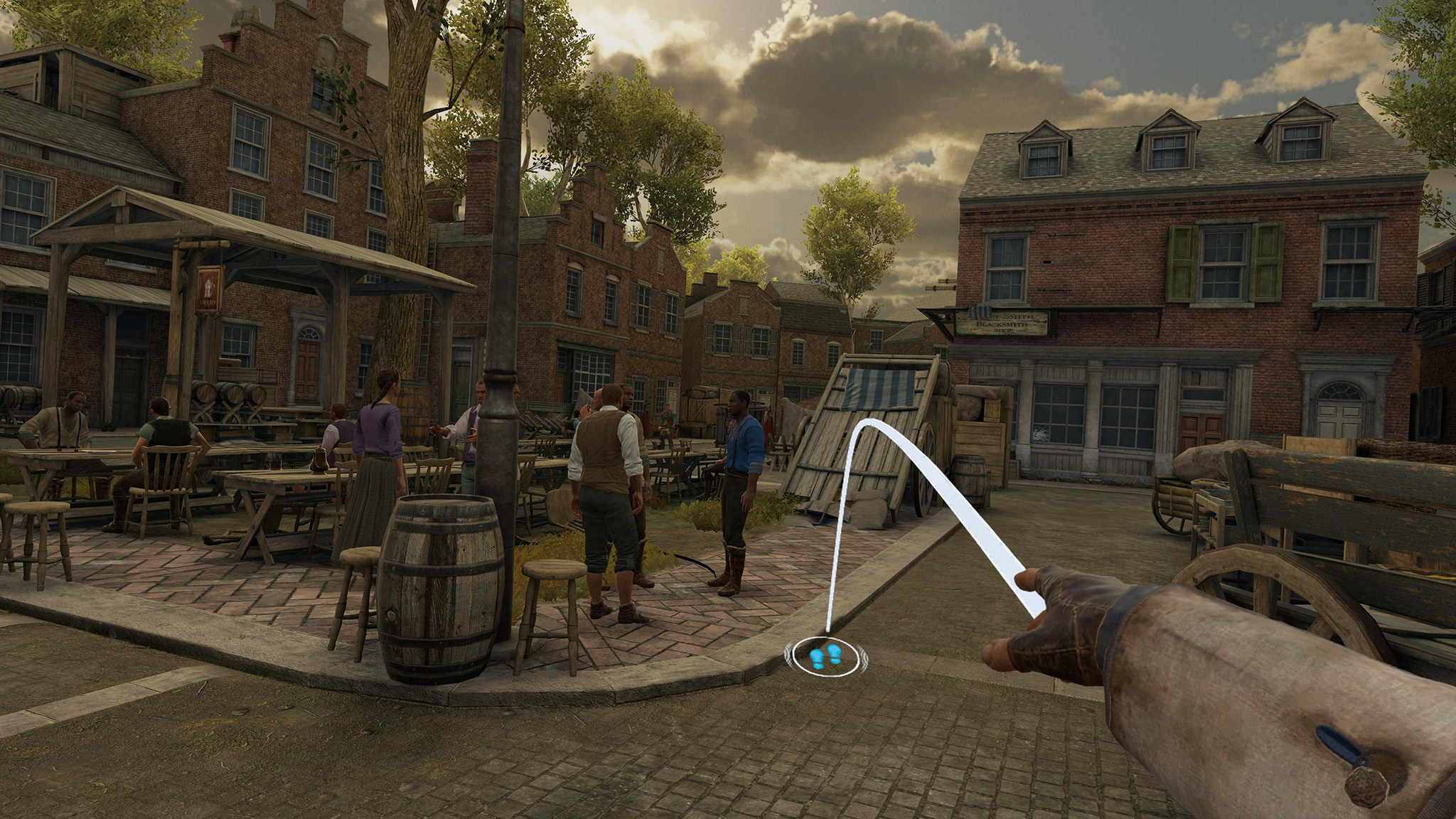
And the options don't just stop at comfort. Ubisoft has employed a wide range of accessibility options that cover motor and muscular issues, hearing and visual impairments, and even simple things like the ability to change the game's difficulty at any time.
Nexus is a game that's made for everyone, no matter what might be holding you back.
And, yes, that means that players can even experience this game to its full extent while playing seated or with little room for movement. It's entirely reasonable to play this game from the comfort (or necessity) of a chair or a small play space.
Ironically, the few bugs I encountered in the game almost entirely revolved around issues with player height — specifically, if that player is short. My son isn't quite 5 feet tall yet and ran into absolutely bizarre instances where lockpicking would glitch out, or he would be stuck in a permanent crouch after a stealth kill.
Typically, tapping the X button to have your character virtually crouch down would fix these problems, but I ran into several of the same issues with lockpicking, and I'm well over a foot taller than my son. Seems to me the lockpicking mechanic is a bit too finicky for its own good.
Unparalleled variety
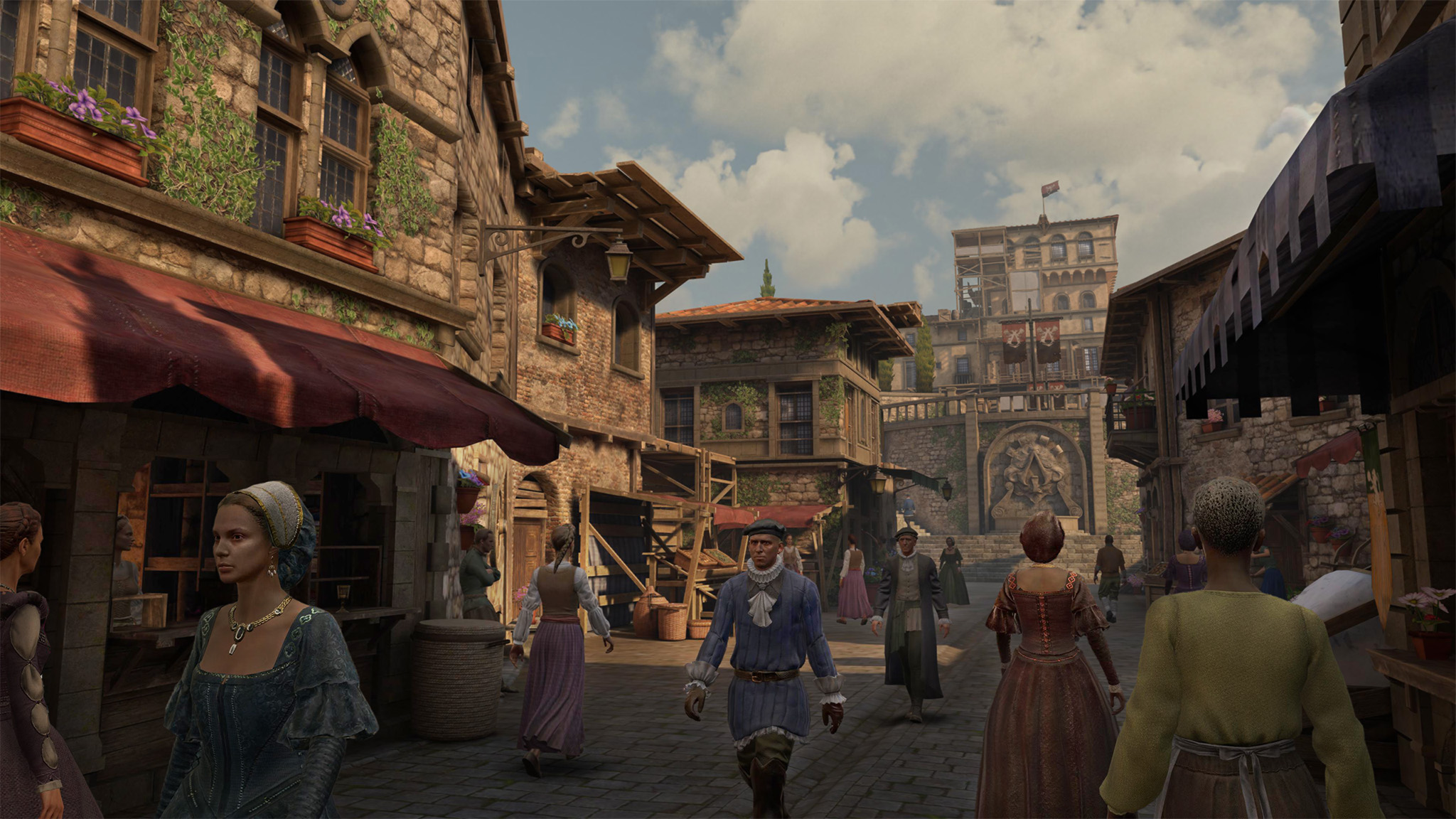
The team at Ubisoft has consistently talked about Nexus being a "full-length" Assassin's Creed game, and they weren't kidding. The game is broken up into 15 different missions, but don't let that "low" number fool you. You'll spend hours in each of these missions, and that's just completing the main quests.
The main shtick of the story is that you're going back through Abstergo's cloud to find remnants of an ancient computer — one that's powerful enough to tell the future and help control human behavior. Because of this, you'll follow three different — yet familiar — characters throughout 2,500 years of human history.
You'll begin with Ezio in Renaissance-era Italy, move on to Connor in Revolutionary-era America, and experience the ancient world of 400 BC Greece through Kassandra's eyes. But you don't just experience one location with each character. Oftentimes, each mission is in a completely different place, even if you're playing the same character.
And the vast majority of these aren't small, linear areas, either.
These levels are a return to the good old days of Assassin's Creed parkour, climbing, and stealth kills.
Each one, with the exception of two or three, drops you in a town filled with buildings, alleyways, ships, water elements, tents, trees, you name it. If it makes sense for the theme — even if that theme is a hazy, dingy swamp filled with scraggly, moss-filled trees and scummy water you'd probably never want to wade through in real life.
I really enjoyed just how vastly different each area and era was, too. You can't pull the same tricks in ancient Greece as you can in Colonial Boston, for instance. The architecture and building layout are completely different. Even combat is different, which I'll cover in the combat section below.
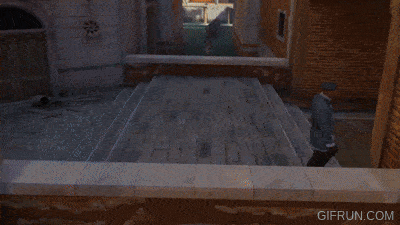
Larger cities like Athens, Boston, Newport, and Venice sport impassable virtual walls that keep you within the simulation's boundaries, but this isn't abnormal for most of the series, anyway.
Regardless of these boundaries, the size of these playable areas is incredibly impressive, and the number of objects to climb up, parkour over, and jump off of is nothing short of staggering. The size and variety of areas completely blew my mind and exceeded any expectation I had of the scope this game would entail.
There are even musical instruments you can play on most levels if you're willing to find them. The depth of interaction is impressive.
The size and variety of areas completely blew my mind and exceeded any expectation I had of the scope this game would entail.
Parkouring and climbing around towns and cities aren't just there for show, though. The game features a dozen or so hidden objects and challenges in each level, whether that's a collectible coin, a historical factoid, or a parkour challenge course.

When I finished the game's main story at just under 30 hours, I had only completed roughly half the number of available challenges and collectibles in all 15 levels, so I expect to go well over that 30-hour mark before I 100% the game.
The main story took me just under 30 hours to complete, and I only completed about half the collectibles and optional challenges in each level.
Maybe more impressive still is the game's visual fidelity despite these large areas. The lighting is excellent, lots of objects litter the streets and interior rooms, textures are typically high resolution — especially on the Quest 3 — and it's clear that the Quest's hardware is getting pushed to the limit in every way.
The game looks surprisingly great on Quest 2 hardware, as well, but it runs at a slightly lower framerate. Ubisoft was able to pull off this level of visual fidelity using a technique called Application Spacewarp which virtually doubles the framerate. This creates some funky visual artifacts at times but I didn't find it particularly distracting in this game.
Part and parcel of making these cities feel more alive is the presence of crowds of people. In my Assassin's Creed Nexus hands-on, I noted that there were a surprising number of NPCs in the Venice mission I played.
Since then, it appears Ubisoft has added even more NPCs, but the NPC variety could use a bit of work. It's not a huge problem, but it's something you'll certainly notice.

You can interact with any NPC you choose, including taking things out of their hands, hitting them, or even killing them. As is the case in any Assassin's Creed game, though, killing more than a few civilians will result in desynchronization.
Some missions even task you with hiding in groups of NPCs to remain anonymous, but I generally dislike these missions. While the story components and setup for them are cool, the mechanics of blending in while moving between crowds feel a little too frustrating for my liking.
Combat and stealth
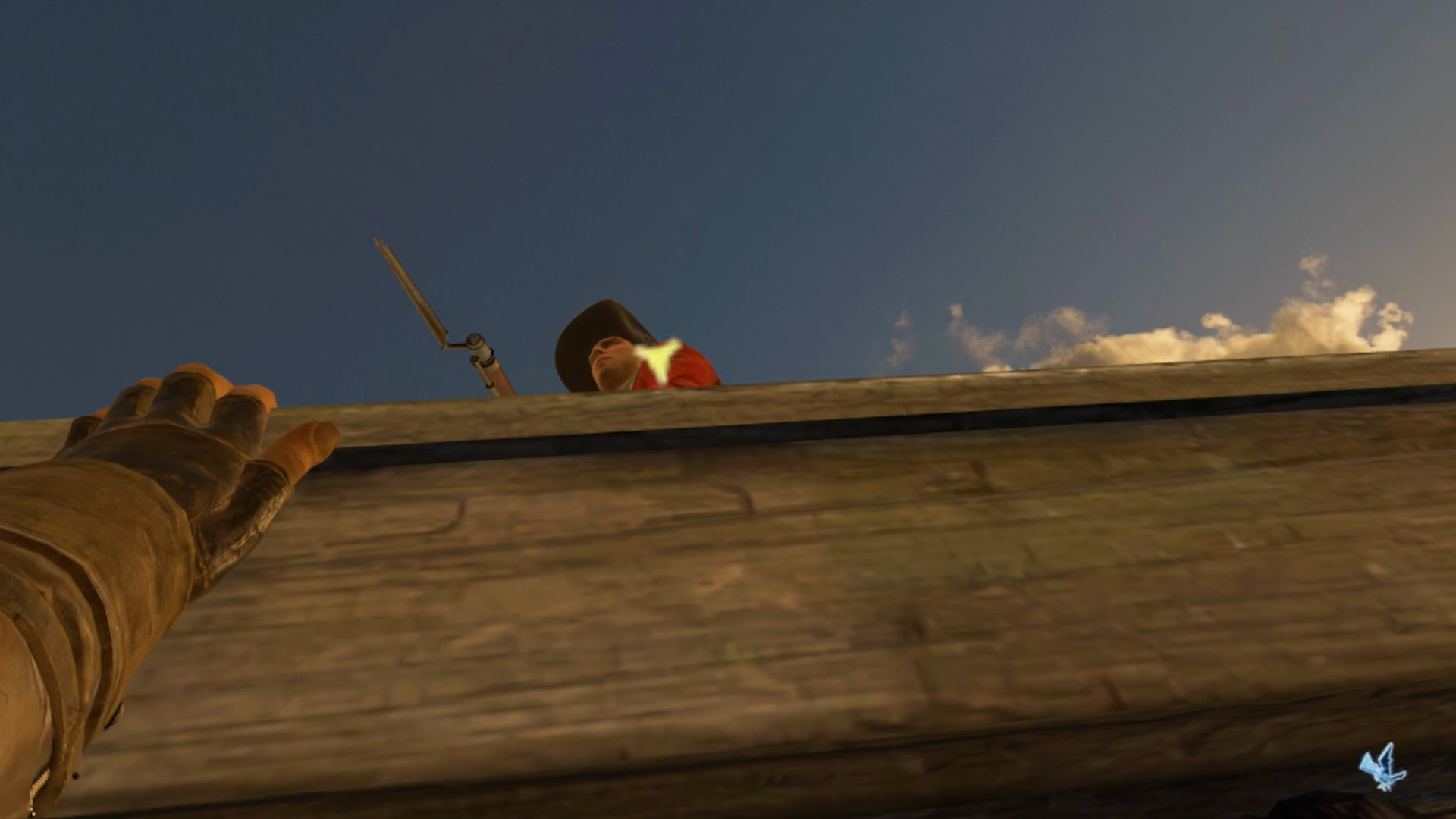
Here's where things will get a little tougher for some players. While parkour is handled impressively gracefully, combat and stealth are more reliant on player skill, with the exception of ranged combat.
Melee combat is an amalgam of Assassin's Creed Unity and some of the newer open-world AC games, as multiple enemies will attack you at once instead of waiting their turn as they used to in the old games.
Thankfully, this game focuses on stealth and ranged combat instead of the beat-em-up nonsense from newer entries in the series.
As you engage in melee combat, you'll need to block, parry, or dodge attacks in order to get the chance to actually hit an enemy. There's little hope that you'll look or feel anywhere as cool as one of the playable characters from the flat-screen Assassin's Creed games, but it's still exciting to engage in the combat.
Ranged combat is about as simple as it comes, though. For the most part, all you need to do is throw a knife at an enemy or shoot an arrow toward them, and the game's auto-aim system will ensure it hits. I didn't like this at first as I felt it removed all the skills needed to get the job done, but it helps eliminate the frustration that comes with aiming these kinds of weapons.
Remember, you're supposed to be playing in the shoes of a trained assassin, not a novice. They wouldn't miss, and as a player embodying that character, you shouldn't, either. I would love to see Ubisoft give players the option to turn this off in a future update, though.

But combat isn't really what makes an Assassin's Creed game good, despite what newer entries of the series have leaned toward. This is a stealth game by nature, and you're rewarded for being as stealthy as possible.
I don't like the newer Assassin's Creed games because they've turned into fairly generic Ubisoft-made open-world titles. That doesn't mean they're bad games; they just don't feel like an Assassin's Creed game to me. Nexus breaks that trajectory and goes right for the proverbial stealth gaming throat.
Each character has its own set of pros and cons, and every setting requires a different strategy to be effective.
Every level is designed in a way to encourage stealthy gameplay, but you can always run in guns blazing if you want. Each character has a main melee weapon, at least one hidden blade, a main ranged weapon, and a set of throwing knives and smoke bombs.
You can even whistle by pinching your thumb and index finger together and bringing them close to your mouth.

Connor has a bow on his back, a throwable tomahawk on his hip, and one hidden blade on each wrist. Kassandra also has a bow but swaps the tomahawk for a legendary sword that's a bit throwable, but not like a tomahawk. She also only has a single hidden blade on her left wrist.
Ezio is the only character with a crossbow instead of a bow and arrow set, a pair of hidden blades, and a far heavier Italian sword that's super awkward to throw. Regardless of the weapons, though, your main ranged and melee weapons all return to your holster automatically if you toss them.
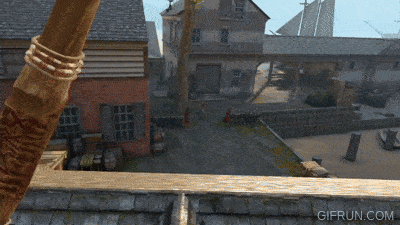
Arrows, bolts, and throwing knives are all consumable objects but can be retrieved if you go to the corpse and gather them. Smoke bombs are a one-time consumable, but you can generally find any of these items strewn throughout levels, even if they aren't super common.
You'll also unlock various shared traits between each character as you progress. Armor-piercing knives, increased arrow capacity, special melee attacks, and more can be used retroactively once you earn them, so mission replayability is pretty high.
But it's the ranged tools — in combination with your hidden blade — that are the key to ensuring you stay stealthy no matter who you're playing as. Since characters are tied to their timeline, you'll have to master all of these skills to complete the game.
Guards don't have an obvious cone of vision, ensuring you have to pay attention to their movements and the direction they face.
Games like Vampire: The Masquerade - Justice and Espire 2 are also very stealth-focused but tend to follow the Metal Gear Solid line of design. In those games, enemies have a cone of vision and it's usually very obvious where they're looking at all times.
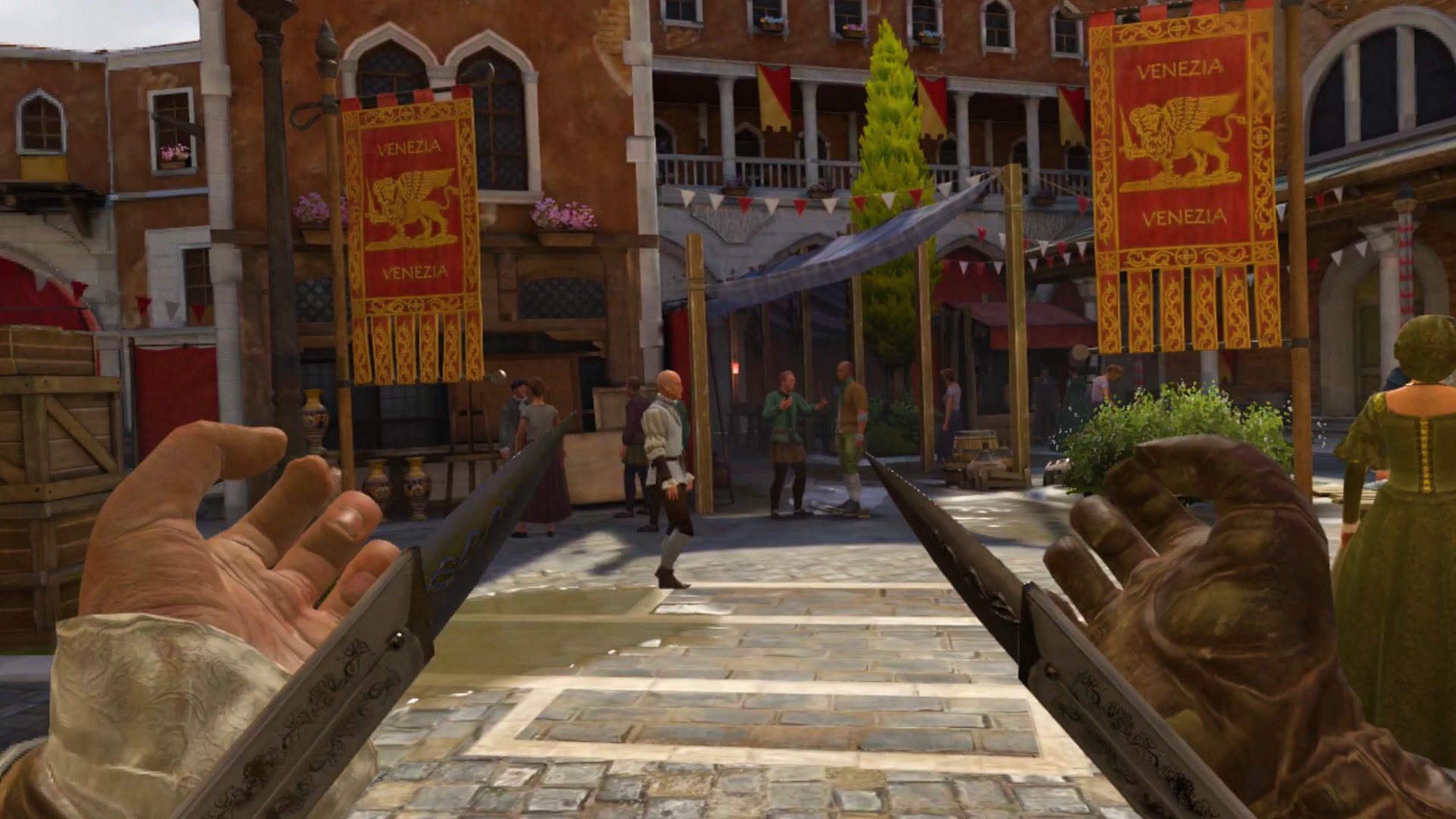
In Nexus, enemies don't have a "cone of vision," but there's a visual timer that'll appear over them when they see you. That gives you a moment to hide yourself before your presence is actually known.
Because of that, it feels more real to sneak around without knowing exactly what the guards are doing at all times. Don't get me wrong, the guards aren't smart by any means. They might surprise you from time to time — it's definitely cool to hear them walk around and enlist other guards with phrases like "You have time to help me find them, get going!" — but these characters still behave very much like a "video game guard" stereotype.
Still, there's something really satisfying about eliminating all the guards in an area just so you can more freely roam around and plan your mission as you see fit.
Hiding places feel more organic than in other stealth games rather than an obvious patch of tall grass placed around patrolling enemies.
I was also regularly surprised at the number of places I could hide. These things don't normally feel conveniently placed, either. This isn't like Horizon, where tall, red grass is conveniently placed around areas where robots patrol.
Hiding places include crates to hide behind or under at a harbor, straw piles in the corner of a busy Renaissance-era market, stairs to hide under, alleyways, rooftops in ancient Greece, or even the hull of a British navy ship in Revolutionary War-era Boston.

If I had any substantial critique here, it would be that I'd like the game's stealth mechanics to be more difficult. It's far too easy to sneak around, kill a guard, and move on to the next one without any real repercussions.
Sure, making a mistake could end up in a guard ringing a bell to call for reinforcements, but it never feels harrowing in the way that a five-star police chase in Grand Theft Auto does, and it never feels life-threatening as it does in Budget Cuts Ultimate, one of the best Meta Quest games.
It would be cool to see them check on each other more often, light fires when danger is sensed, or anything else that makes sense for the scenario. Obviously, a guard in 400 BC can't just radio over to see if Jim went MIA, so a potential sequel would need to implement this cleverly.
Verdict

Assassin's Creed Nexus isn't just the VR game I was hoping for. It's a return to Assassin's Creed roots in ways that I could only have dreamed of. I don't like the most recent Assassin's Creed games at all because I feel like they've lost focus of what makes these games good: parkour, climbing, and stealthy kills.
Nexus takes the classic formula and puts it in a first-person perspective that's a first for the series, and it feels like a total dream come true. Plus, the amount of variety in each of the towns and cities you'll visit, the optional collectibles and challenges, and the production values and feel are genuinely incredible.
This isn't just a good VR game — a medium that gets a bad rap for the substantial number of indie games present. It's a good game that should be played by anyone who has access to a Meta Quest headset. It's more than I had hoped for, yet it's exactly what I wanted in a proper mainline Assassin's Creed game.

